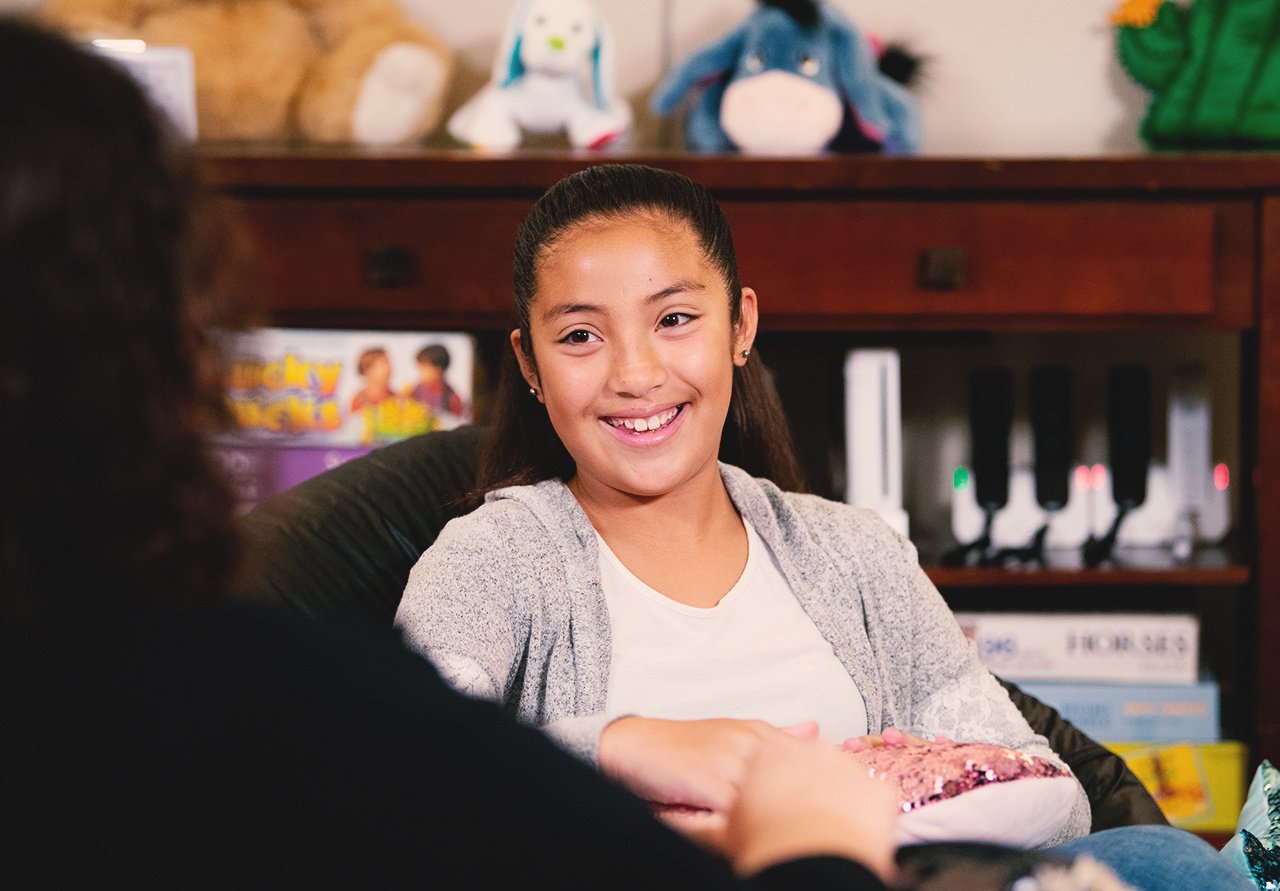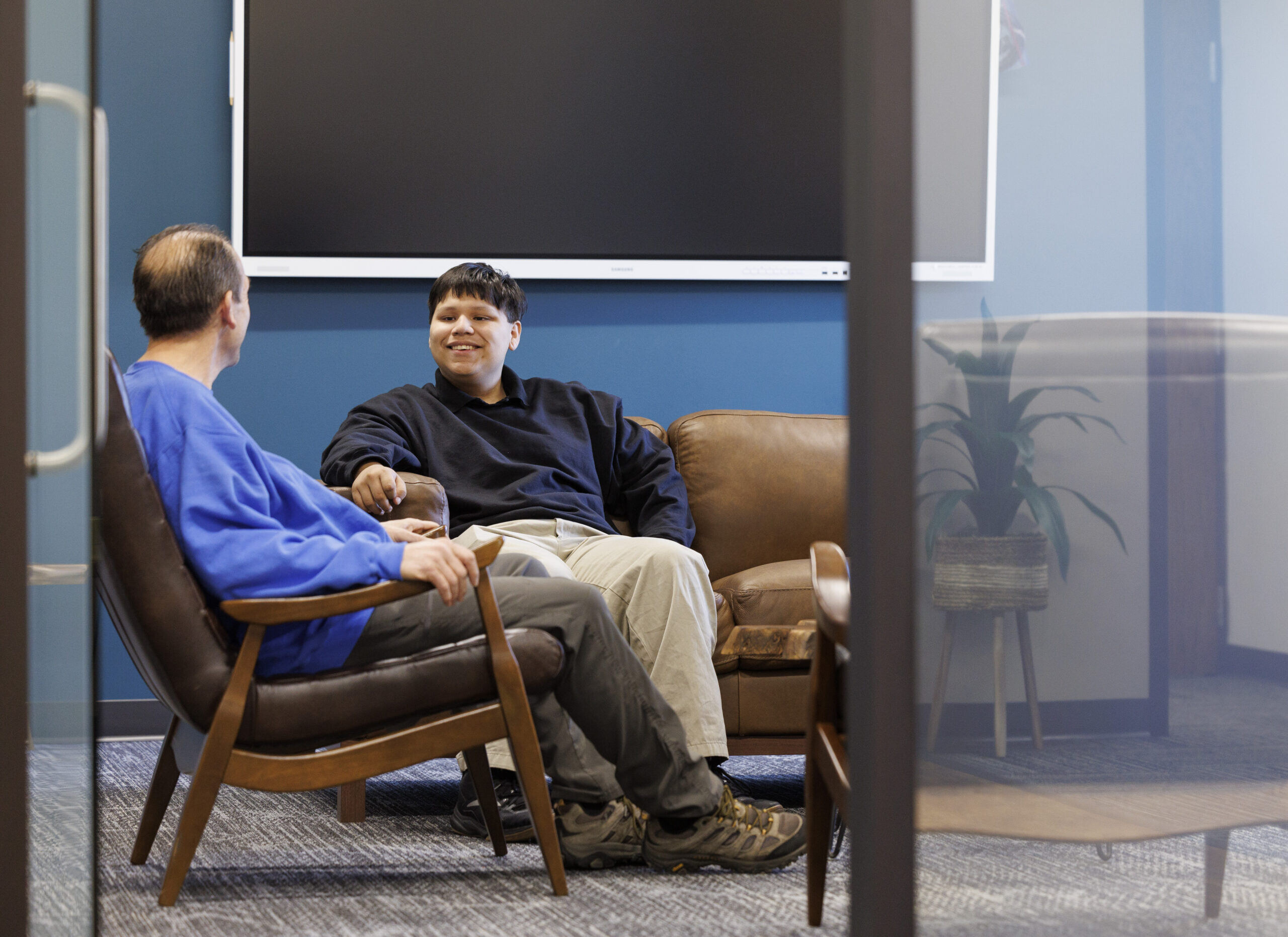
Teens are now spending more time-consuming digital media than sleeping. Yep, you read that right. Digital media consumption, aka digital diet, is now the most time-consuming teen activity—above all else.
Digital media is any digitized content that can be transmitted electronically via the Internet, cable or computer networks. This content includes TV programs, movies, videos, music, text messaging, gaming, social media, websites, newspapers, novels, and more. Technological advances provide more devices to access that content, namely smartphones, tablets, computers, TVs, and MP3 players.
Most parents aren’t aware of how much time their teens spend consuming a digital diet nor the intake quality. As digital media consumption increases, teens lose focus more easily, sleep less, and exercise very little.
The Digital Diet of the American Teen
Teens now spend 9 hours daily consuming digital content—a growth of 300% since 1995. Parents are aware their teens are going online but are unaware of just how much time they spend. Many parents believe their teen spends only 3 hours per day, a third of the time teens actually dedicated to consuming digital media.
How does that digital diet fit in with other activities such as sleeping and homework? Digital consumption actually takes up more time than both of those as well. Also, teens use multiple devices such as smartphones, laptops, and TVs, to access different platforms such as social media, online videos, and video games.
Teens and Screens
Teens have increased their daily screen time by 300% since 1995.
- 7.5 hours of screen time in 2015
- 6 hours of screen time in 2005
- 2.5 hours of screen time in 1995
In 1995, almost all teen screen time involved watching television. 60% of teens talked on the phone daily, and 64% of teens hung out with friends at the mall or other locations at least twice a week. Around 11% of teens were overweight.
By 2005, technology advanced, and screen time grew. Teens were spending an average of 6 hours a day consuming digital media, more than any other activity. Interest in hobbies decreased, as did physical activity, and time spent with friends. The teenage obesity rate grew to 16%.
In 2015, teens averaged 7.5 hours of screen time every day. 71% of teens have a television in their bedroom and watch up to 3 hours of TV a day. The other time spent is on the phone as the average teen sends 60 texts a day and uses their smart phone to consume their sizable digital diet. A shocking 28% of teens are also overweight.
Putting It into Context
MORE POPULAR THAN SLEEP!
Common Sense Media reports that teens now spend more time consuming a digital diet such as watching television, listening to music, interacting on social media, playing video games, etc. than sleeping.
On a daily basis, teens spend:
- 9 hours consuming digital media (7.5 hours directly in front of a screen. The remaining time is listening to music.)
- 7 hours sleeping
- 8 hours on education
- 0.7 hours on physical activities
Those nine hours of digital media consumption adds up to 63 hours/week and 3,276 hours/year, equaling 136.5 days/year! This doesn’t include homework or online school lessons!
YET…Parents think their children only spend about 3 hours online each day.
Mobile Devices Reign for Teen Media Consumption
91% of American teens access the internet through a mobile device. Smartphones account for 46% of all screen time:
Teens use their smartphones to visit their favorite social media sites, listen to music, and communicate with peers. It’s a one-stop shop for their digital diet. 43% of teens also use smartphones for online video consumption.
TV & Music Top the Charts of Teen Digital Diet
While teens clearly consume a variety of digital content ranging from online videos to gaming, they still favor watching TV and listening to music as their parent’s generation did. However, they have more options for accessing that content than their parents ever dreamed of having.
- 66% of teens listen to music every day
- 58% of teens watch TV every day
- 45% of teens use social media every day
While some teens state they don’t listen to music, watch TV, or use social media every day, many admit they still consume these forms of digital media “a lot.”
- 73% of teens listen to music “a lot”
- 45% of teens watch TV “a lot”
- 36% of teens use social media “a lot”
Teens Log on Frequently
Almost every teen goes online daily.
- 92% of teens said they go online daily using some device
- 24% of teens admit to being online “almost constantly” regardless of device
Additionally:
- 56% of teens go online several times a day
- 12% of teens go online once a day
Mobile devices account for the increase in teen Internet activity. 94% of teens use mobile devices instead of a computer to go online daily. Even 68% of teens without smartphones still find a way to go online daily.
Teens Expand Social Media Tastes
With more social media options sprouting up, teens’ digital-diet taste buds expand as well. 71% of teens use more than one social network site. Facebook remains the most popular site with teens, but Instagram and Snapchat are growing in popularity:
- 71% use Facebook
- 52% use Instagram
- 41% use Snapchat
- 33% use Twitter
- 33% use Google Plus
- 24% use Vine
- 22% use Pinterest
Channel Preference Varies by Gender
Social media preference is often split between genders.
- 44% of teen girls say they enjoy social media “a lot” compared to 29% of boys
- Girls spend an average of 40 more minutes per day using social media than boys
- Approximately 62% of teen boys say they enjoy playing video games “a lot” compared to 20% of girls
Digital Media is Altering How Friends Interact
The more time teens spend in the digital world, the more they are apt to change how they make and interact with friends. 57% of teens have met a new friend online, but only 20% of teens have actually met their online friend in person.
Teens’ Preferences When Communicating
- 79% prefer instant messaging
- 72% use social media
- 64% use email
- 59% use video chat
- 52% use video games chat feature
- 42% use messaging apps such as Kik or WhatsApp
90% of teens with phones exchange texts. The average teen sends and receives a total of 60 texts per day (on average).
Even with a large amount of communication, only 25% of teens actually spend time with friends in person and outside of school regularly.
Study Time Suffers from Multitasking
If digital media consumes more teen time than sleep does, imagine what it’s doing to homework time!
- 76% of teens listen to music while doing homework
- 60% of teens text while doing homework
- 51% of teens watch TV while doing homework
- 50% of teens use social media while doing homework
James Steyer, chief executive officer and Common Sense Media founder cites a Stanford study that found dramatic differences in cognitive control and processing information when using heavy amounts of media to multitask. “Teenagers think that multitasking during homework doesn’t affect their ability to learn and… we know it does,” Steyer says.
“As a parent and an educator, there’s clearly more work to be done around the issue of multi-tasking. Nearly two-thirds of teens today tell us they don’t think watching TV or texting while doing homework makes any difference to their ability to study and learn, even though there’s more and more research to the contrary.” – James Steyer
The Stanford study found:
- Heavy media multitaskers were 77 milliseconds slower reacting to changing patterns.
- High media multitaskers performed poorly during long term memory tests.
- High media multitaskers were 426 milliseconds slower than their counterparts when switching to new activities and 259 milliseconds slower engaging in a new section of the same activity.
MIT neuroscientist Earl Miller notes that our brains are “not wired to multitask well…there’s a cognitive cost.” In fact, multitasking has been shown to drop IQ levels. Very concerning for parents!
Parents’ Top Concerns about Teens Digital Diet
One in three parents say they have had concerns or questions about their child’s technology use.
- Privacy and safety are the most common concerns.
72% of parents worry their child will reveal too much personal information to strangers. - Parents also expressed concern over cyberbullying.
72% of teens reported being cyberbullied in the last year. - Parents are also concerned about health.
80% of teens sleep with their phone within reach and most teens get less than 8 hours of sleep per night.
The blue light devices emit can cause sleep issues. The light is “short-wavelength-enriched” meaning it emits more blue light, a light that negatively affects levels of the sleep-inducing hormone melatonin.
Parents are Checking In
Parents are communicating with their teens about what is considered appropriate and inappropriate behavior on social media. About 94% of parents have talked to their children about acceptable online behavior, and 40% have had that conversation often. More parents are going to greater lengths to keep their teens safe.
- 61% checked which websites their teen visited
- 60% checked their teen’s social media profile
- 48% looked through their teens phone calls/messages
- 39% used parental controls
- 16% used parental controls to restrict cellphone use
- 16% used monitoring tools to track a teen’s location through his/her cellphone
Around 60% of teens say their parents influence their online behavior the most, showing that parents who actively educate and check usage influence their teens’ online behavior.
What Else Parents Can Do
Even though parents are doing a great job of discussing proper online behavior, many would be shocked to learn the amount of time teens spend online daily. A study found that parents assume their child only spends three hours online each day. If you are concerned about your teen’s digital diet, take action. Teens admit parents influence their online behavior, but how can parents do so? The American Academy of Pediatrics recommends:
- Go Digital Together
- Joining kids in digital spaces is another way to spend time together. You can play video games with your kids or ask teens to walk you through their online world.
- Set Up Digital-Free Zones at Home
- Establishing limits on technology usage, helps prevent technology addiction. Consider making the dinner table a tech-free zone. Make it “face time” without the technology and discuss the day’s events in their lives. Think about setting time limits as well.
- Be Picky
- It’s okay to dictate what your teen does with technology. Skyping with a favorite aunt is more beneficial than watching a 20-minute YouTube clip of “Epic Fails.”
- Communicate Boundaries
- Social media can help teens figure out who they are and how to successfully communicate with their peers. However, periodically monitor the communication. Violent, vulgar, offensive, or illicit conversations are a red flag. They should be evaluated for other risk factors.
- Encourage Open Communication
- Create healthy communication with your teen and encourage them to share what’s happening in their digital world.
- Walk the Walk
- Lead by example. Limit you own digital media consumption, so it’s noticeable to your teen. Demonstrate how to live a great life with device-free experiences.
- Anticipate Mistakes
- Mistakes happen. View these moments as learning experiences and talk about online safety and etiquette.
As the digital world expands, teens’ digital diet will continue to grow. The question is: Will the content be a positive or negative use of time? Parental guidance can make the difference. Digital media can provide opportunities to learn, spark healthy interests, get inspired, and develop hobbies. Talk to your teen about their online behavior and monitor digital media usage.
Contact us about counseling for troubled youth
Call us at 1-877-300-9101 to schedule an appointment or request more information from the dropdown below.










